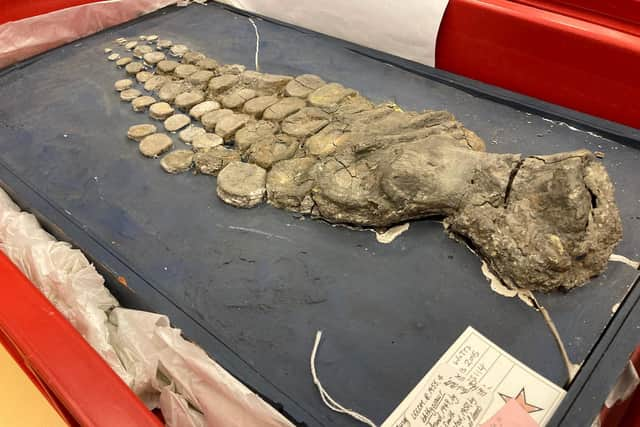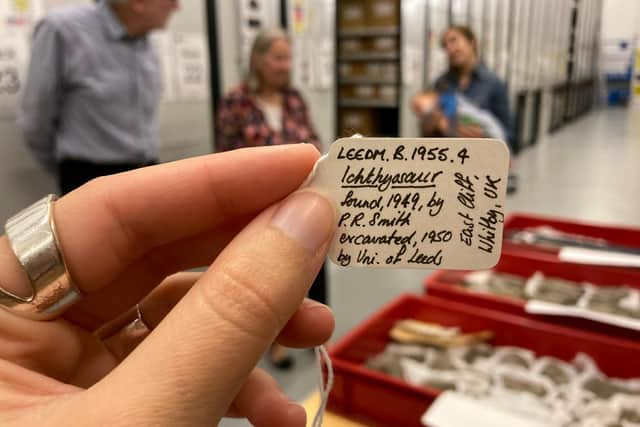Story of how a 250 million year-old reptile ended up in a museum in Leeds is revealed for the first time
and live on Freeview channel 276
They were the fossilised remains of an ichthyosaur, an extinct species of fish-like reptile which first appeared around 250 million years ago and were passed to Leeds Museums and Galleries where they have remained part of the collection ever since.
It is only now, and some 72 years later, that the full story behind that discovery, on the historic Whitby coastline, has come to light.
Advertisement
Hide AdAdvertisement
Hide AdPauline Hoggard made that find of a lifetime but, now aged 88, her family have only just heard the story.


They contacted the team in Leeds who managed to track it down amid the vast collection at the Leeds Discovery Centre and invited the family to Leeds to see it in person. Pauline, who lives in Leicester, wasn’t able to make the trip herself but her niece Lesley, her husband Robert and their children Ruth and grandson Al came to see her find and take some pictures.
Pauline and her family were staying at a boarding house in Whitby and made friends with another family on holiday and all decided to go fossil hunting at the cliffs.
Between them they had found a few little unremarkable fossils and most of the party wandered off, deciding to try their luck elsewhere, but Pauline stayed behind to scour the
rock face some more.


Advertisement
Hide AdAdvertisement
Hide AdShe recalls: "I wandered up to the cliffs to see if there was anything of interest there. What did I spot but what looked like part of a skeleton still embedded in the stone. The bones appeared from under the cliff in a straight line of about four feet and were at right-angles to the grey cliff.
"It was plainly the backbone/tail-end of a prehistoric creature, the rest of which was trapped at the bottom of, and underneath, the cliff.
“It seemed to me that the tide had recently uncovered this fascinating skeleton. I then ran like the wind to share the news with our little party. And they were all only too happy to return to the site to see what I had found.”


Clare Brown, Leeds Museums and Galleries curator of natural sciences, said: “It’s been an absolute delight for all of us to hear about Pauline’s story and breathe some new life into an extraordinary specimen that’s been part of our collection for decades.
Advertisement
Hide AdAdvertisement
Hide Ad“Fossils are always fascinating, because they capture a moment in time so spectacularly far removed from our own and give us tangible evidence of what life on Earth was like hundreds of millions of years ago.
“But to hear the story of how our fossils were found makes them all the more enthralling and gives us the chance to experience some of the joy and excitement Pauline must have felt all those years ago. I’d like to thank Pauline and her family for sharing such a precious memory with us.”
Pauline’s story will now become part of the fossil’s records and will be attached to it to inform future experts and curators of where it came from.


Support the YEP and become a subscriber today. Enjoy unlimited access to local news and the latest on Leeds United. With a digital subscription, you see fewer ads, enjoy faster load times, and get access to exclusive newsletters and content. Click here to subscribe.
Comment Guidelines
National World encourages reader discussion on our stories. User feedback, insights and back-and-forth exchanges add a rich layer of context to reporting. Please review our Community Guidelines before commenting.
